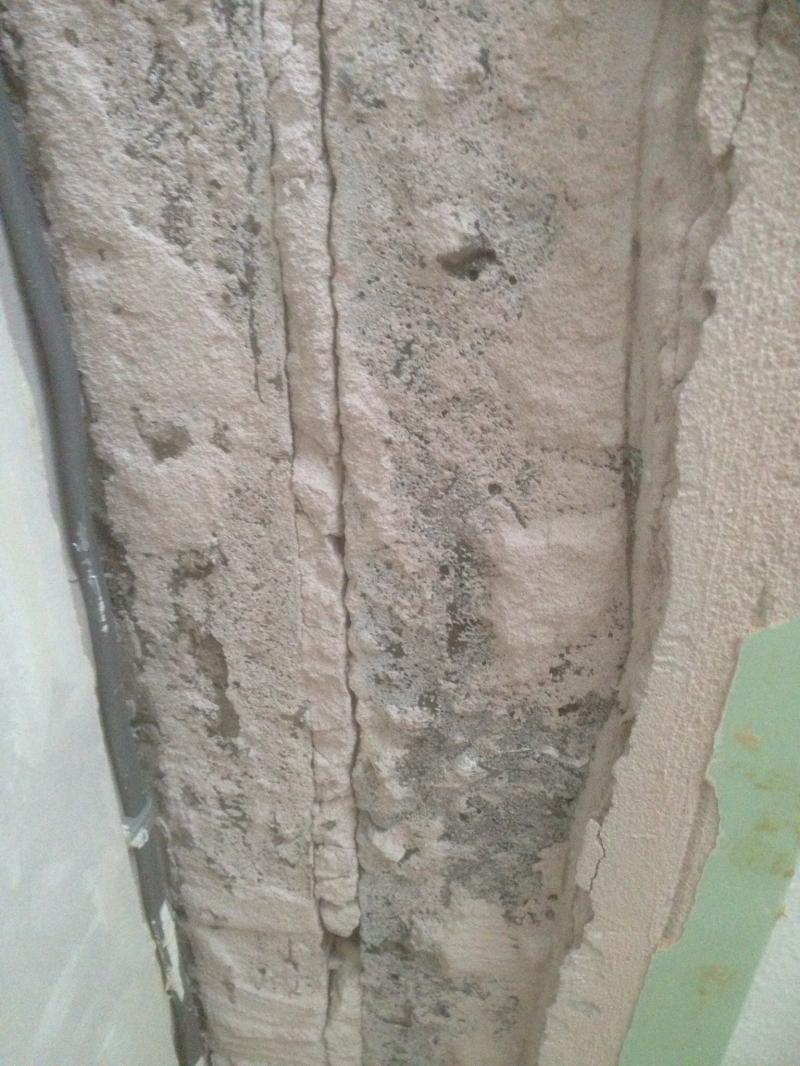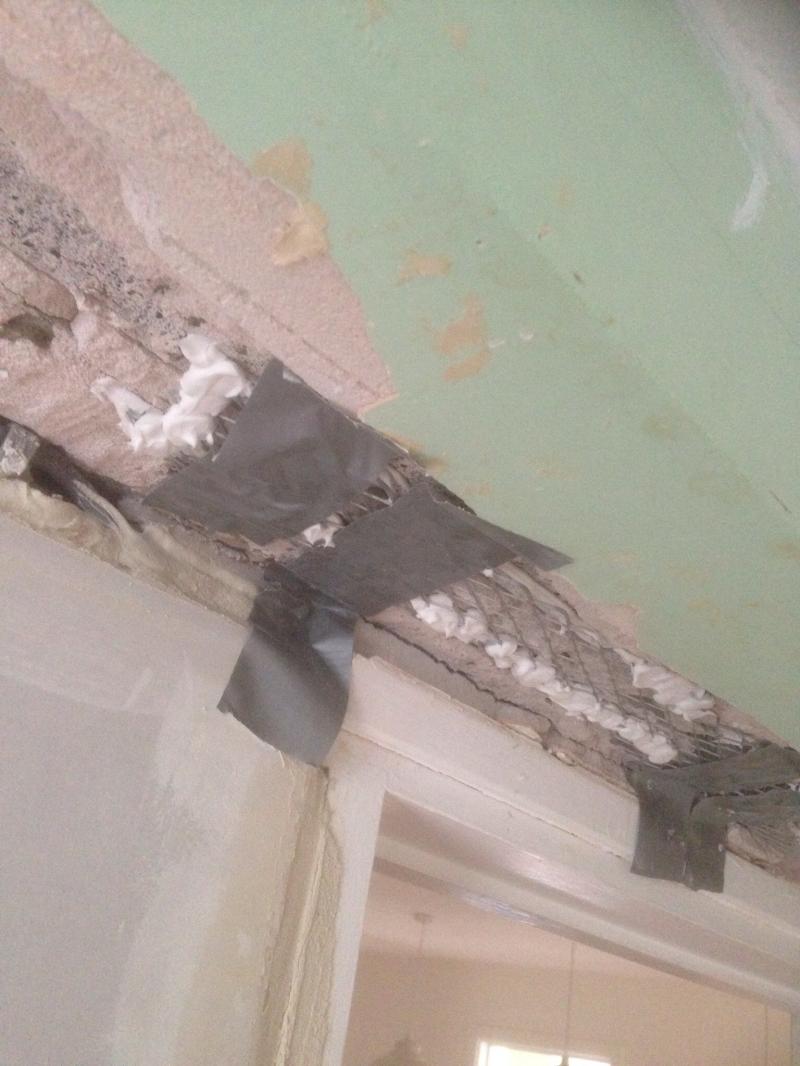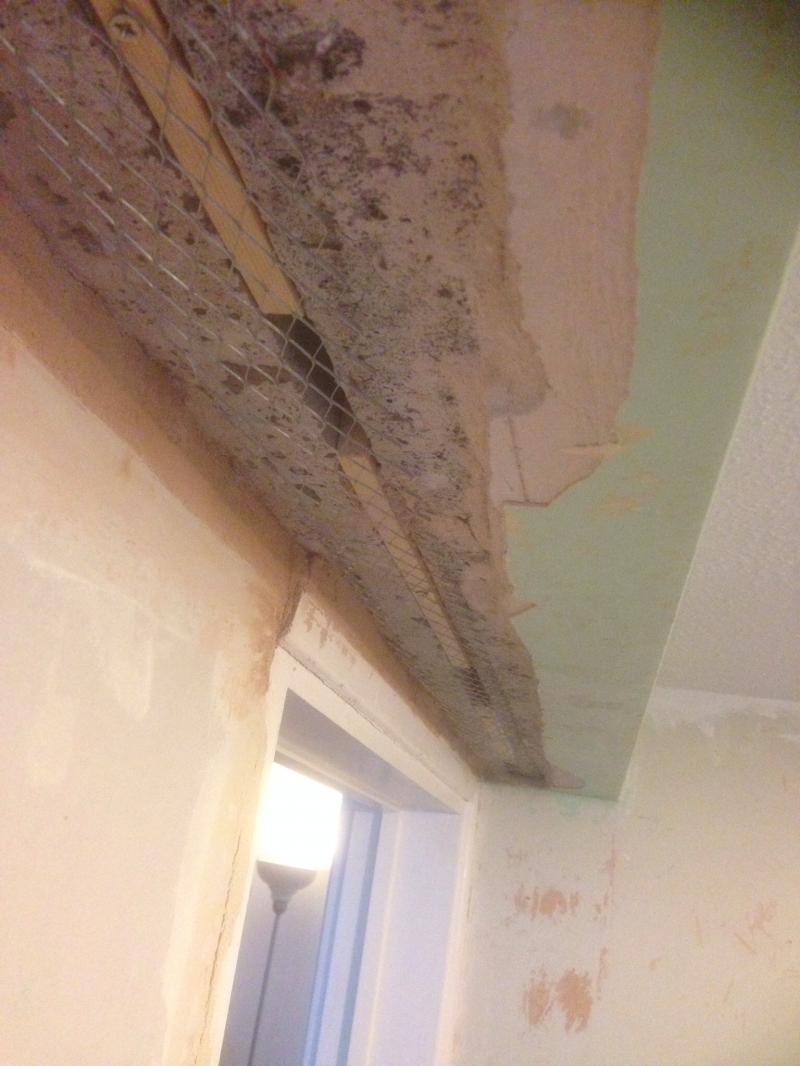Hi,
Struggling with fixing some EML to two concrete lintels in parallel, hoping for some advice.
The plaster had cracked on the join between them so I want to replace the cracked bit and make sure there's some EML in the repair.
I tried masonry nails and they won't go in.
Don't really want to drill and sink screws in as seems a little overkill and may weaken the lintels.
I wasn't sure if plaster dabs would hold it as the EML is a strip on a roll and quite springy.
In the end I've tried a short length and put a reasonable amount of grip fill on the lintels and used duck tape to hold it up as best I can. Not elegant!
Would be interested in better suggestions for the remainder!
Thanks
Struggling with fixing some EML to two concrete lintels in parallel, hoping for some advice.
The plaster had cracked on the join between them so I want to replace the cracked bit and make sure there's some EML in the repair.
I tried masonry nails and they won't go in.
Don't really want to drill and sink screws in as seems a little overkill and may weaken the lintels.
I wasn't sure if plaster dabs would hold it as the EML is a strip on a roll and quite springy.
In the end I've tried a short length and put a reasonable amount of grip fill on the lintels and used duck tape to hold it up as best I can. Not elegant!
Would be interested in better suggestions for the remainder!
Thanks





